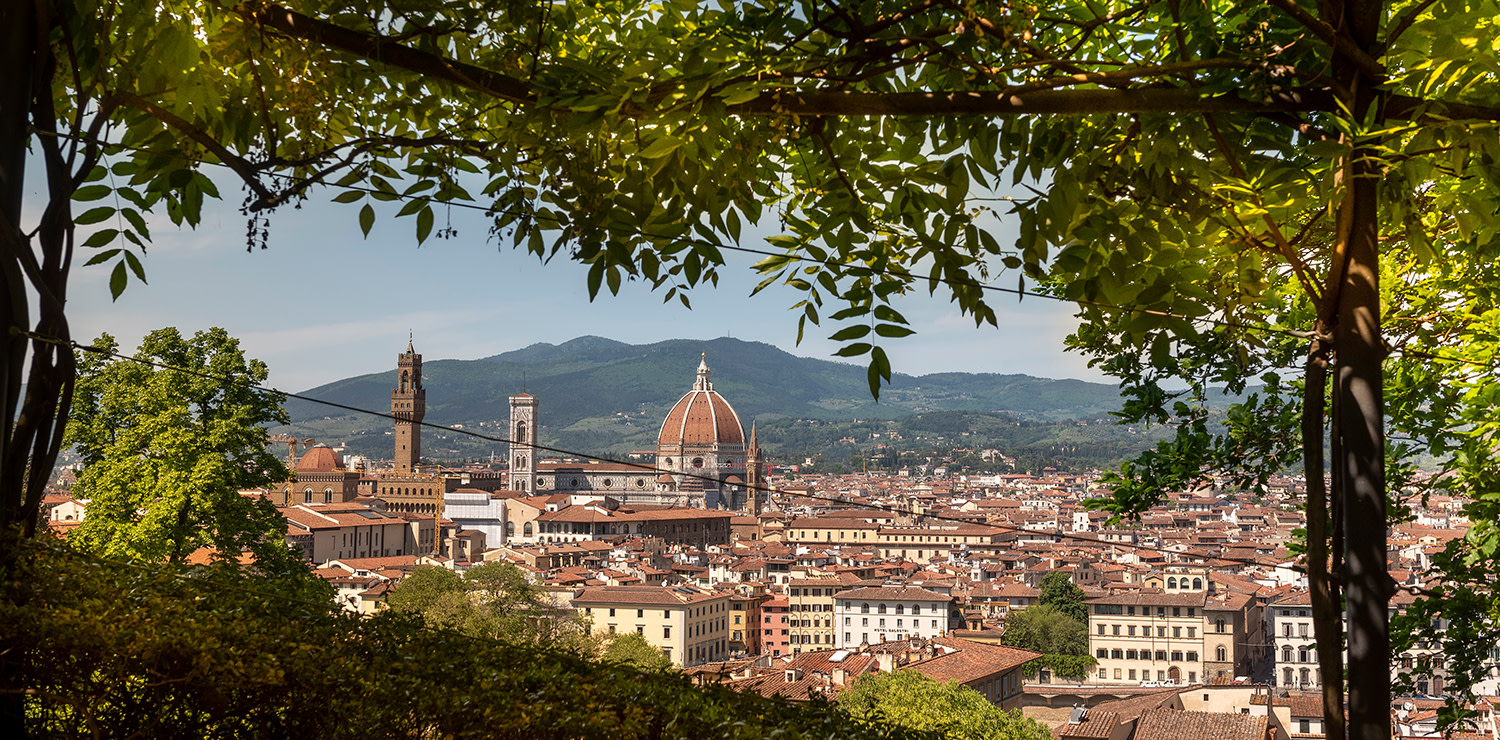Cecilie Hollberg takes us to discover her secret Florence
The unpublished itinerary of the director of the Galleria dell'Accademia in Florence
I have been living in Florence for six years and during this time, wandering around the city (something I love to do very early in the morning) I have often come across corners and places that, while not as famous as Michelangelo’s David kept in the museum that I manage, can be an incredible and unmissable experience. My secret Florence begins from above. From the ‘spiritual guardian’ of the city, the Basilica of San Miniato.
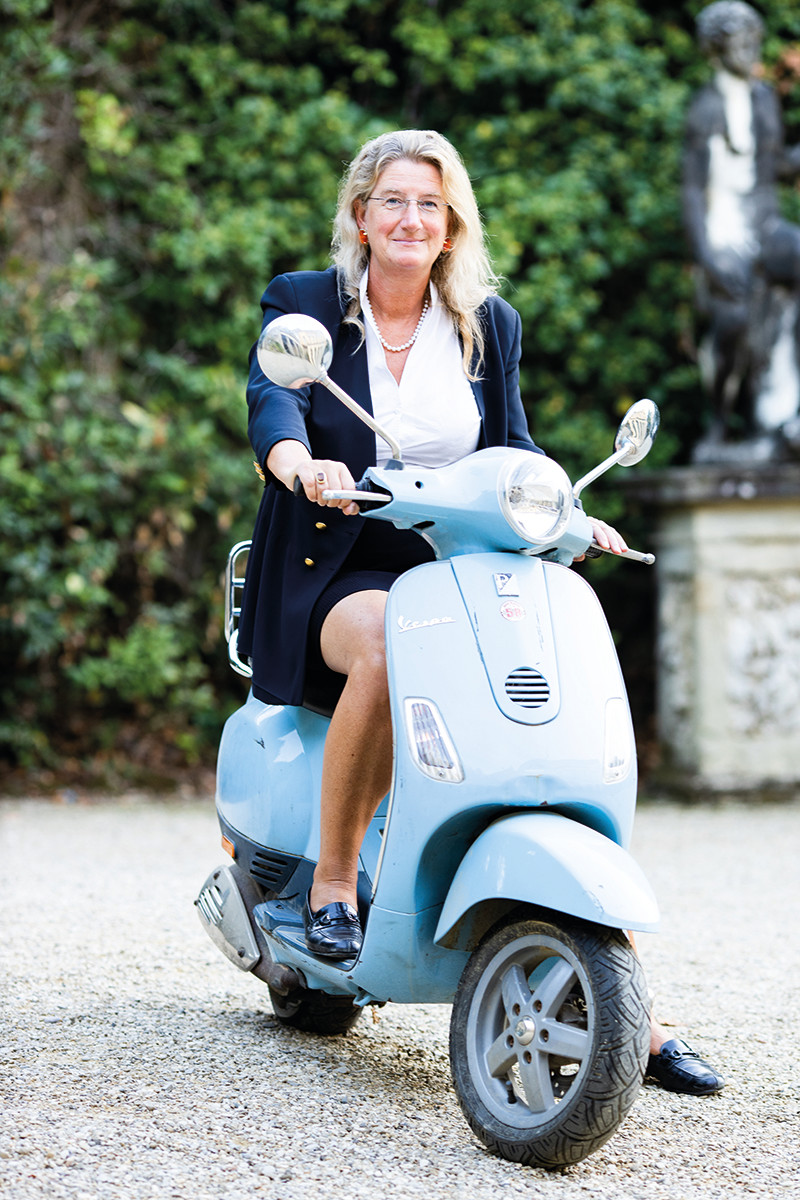 Cecilie Hollberg director of the Galleria dell’Accademia in Florence since 2015
Cecilie Hollberg director of the Galleria dell’Accademia in Florence since 2015You can get there from the city centre by two lovely routes that go up the Oltrarno hill. We will take both of them, one on the way up and the other on the way down. Let’s start from the San Niccolò gate and begin our climb in the direction of the beautiful Rose Garden. We cross it, and climb up to Piazzale Michelangelo. Here I recommend you pause to catch your breath and look out over the semi-circular balustrade to enjoy the spectacular view of Florence (you’ll see plenty more if you continue to follow me). From here, another ten minutes’ steep climb and an impressive flight of steps take you up to the incredible two-tone marble facade. It has been well worth the effort. You are in an extraordinary spot, and I could fill the pages of this entire piece just describing the wonders of this special place, led today by an equally special abbot, Father Bernardo.
 Porta del Cielo di San Minato Al Monte ph Pierpaolo Pagano
Porta del Cielo di San Minato Al Monte ph Pierpaolo PaganoHe and this church are two of the city’s very special assets. But go inside and stop to admire the floor - a masterpiece of intricately inlaid black and white marble depicting the signs of the zodiac, griffins and animals. When you leave, Florence is at your feet and you are surrounded by beauty and silence, among olive trees and cypresses. A divine gift.
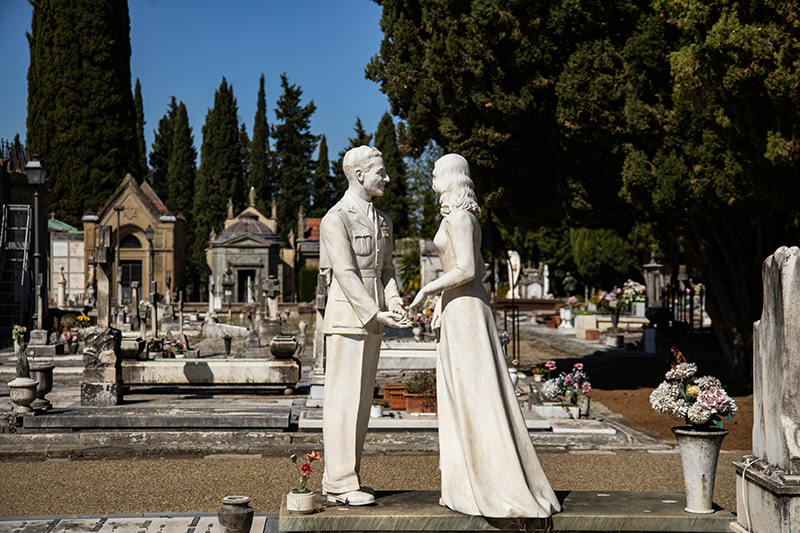 Cemetery of the Holy Doors, detail of the funeral monument of the dancing couple
Cemetery of the Holy Doors, detail of the funeral monument of the dancing coupleTo your right is the Cemetery of the Holy Doors with the tombs of illustrious Florentine families in a mixture of eras, styles, materials and shapes. Walk along the central path, and at the end you come across a white marble statue that depicts a young man and woman dancing, perhaps newlyweds. The woman’s dress seems to flutter in an eternal movement of youthful happiness. They were not even 25 when they died just a year apart, which makes it a truly touching monument, beautiful and sad at the same time.
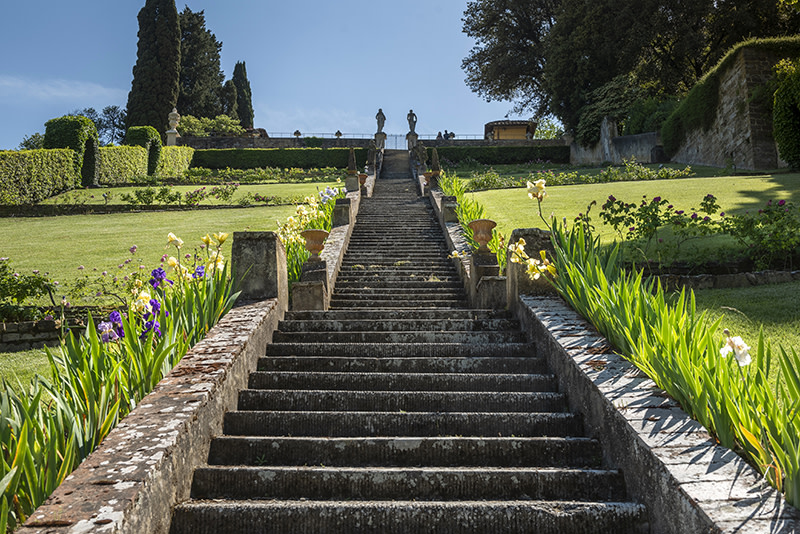 Villa Bardini ph. Pasquale Paradiso
Villa Bardini ph. Pasquale ParadisoFrom here, we return to the historic centre, this time going down to the left of San Miniato, along the picturesque Via San Leonardo, not before having walked a few hundred meters along Viale Galilei. Skirt Forte Belvedere for a short way until the entrance to the Bardini Garden appears on your right at the beginning of Costa San Giorgio. Buy your ticket and go in. You will be surprised by the meticulous care, as well as by its beauty: it is one of the best kept monumental gardens in Florence, full of secluded, private corners. Among them, my favourite is the terrace in front of the cafe. Look over to the right corner and you will have another breathtaking view of Florence. Walk down the path under the wisteria pergola to the exit in via dei Bardi.
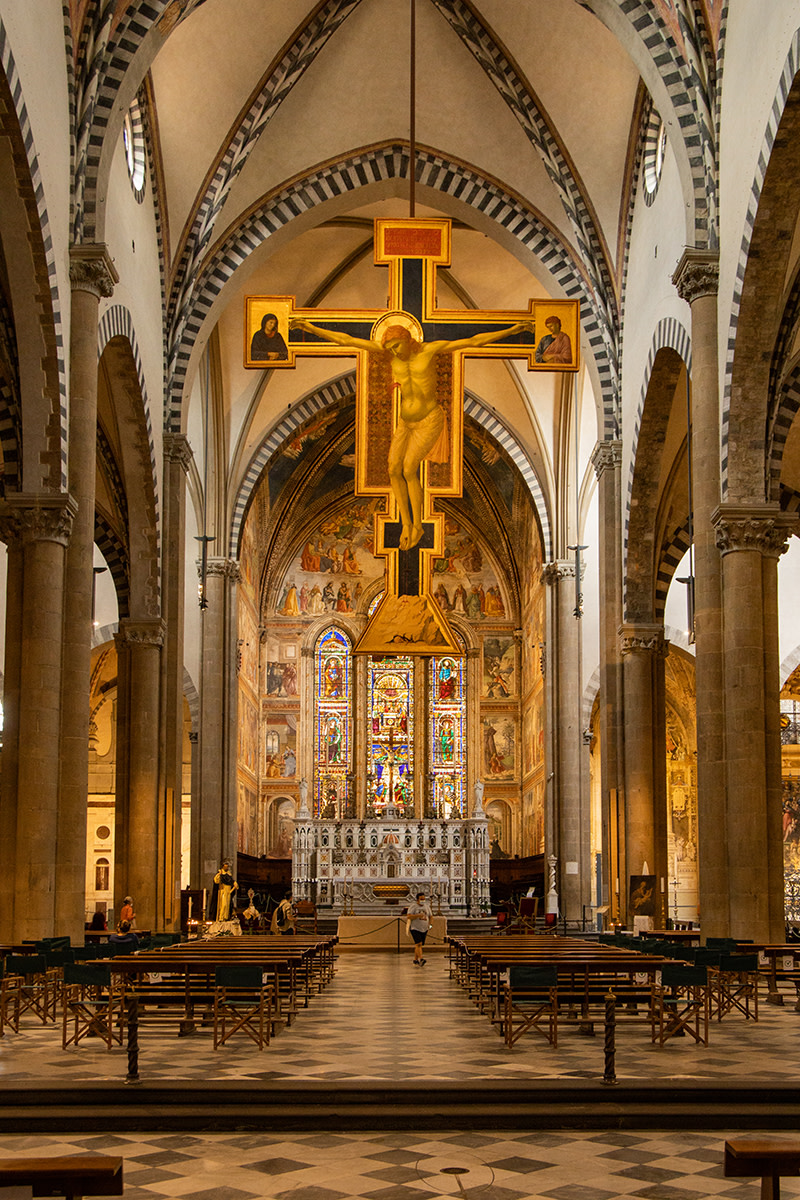 Pontormo’s Deposition from the Cross, Church of Santa Felicita
Pontormo’s Deposition from the Cross, Church of Santa FelicitaGo left back onto Costa San Giorgio and after a short walk you will come to the Church of Santa Felicita, alas too little known. As you enter, on the right, you will have an unexpected surprise - one of the city’s most beautiful altarpieces, Pontormo’s Deposition from the Cross, recently restored by the Friends of Florence. The colors of the draperies seem illuminated by a livid neon light, the eyes of the figures stare at you as if hallucinating, and for a moment you wonder if you are in front of a Pop Art work rather than a masterpiece of Mannerism.
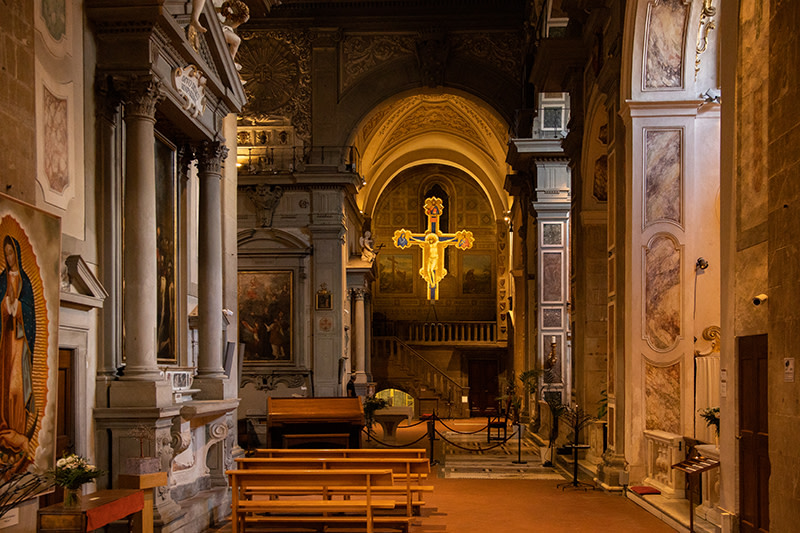 Giotto’s Crucifix in the Church of San Salvatore in Ognissanti
Giotto’s Crucifix in the Church of San Salvatore in OgnissantiOnce you have recovered from the amazement, get ready for another stirring experience, because the Brancacci Chapel is not far away. Piazza del Carmine, in fact, is still in the Oltrarno district. The church, from which the square takes its name, with its rough, unwelcoming façade is not at all inviting, but follow my advice and go in. To reach the chapel, you go through the cloisters and get your ticket at the back. I could talk for hours about the incredible cycle of frescoes, but I’ll limit myself to a few notes. Although the frescoes were painted by three different hands (Masolino, Masaccio and Filippino Lippi) at different times during the 15th century, it gives the perception of great harmony, denoting the greatness of each of the three artists. All the figures are wearing monochrome robes, but only one figure is in ornate dress: probably it is Felice Brancacci, the wealthy cloth merchant who commissioned the work. You can also recognize him by his orange turban.
Right opposite Piazza del Carmine, across the Arno, is Piazza Ognissanti, whose beautiful if slightly out of the way church, houses a magnificent Crucifix, one of Giotto’s most famous works.
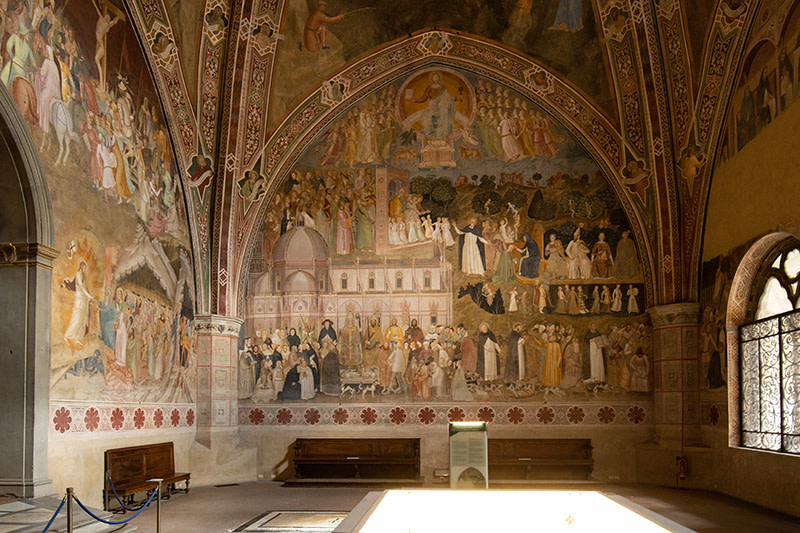 the Spanish Chapel close to the Basilica of Santa Maria Novella
the Spanish Chapel close to the Basilica of Santa Maria NovellaYou are now “qua d’Arno”, or on the right bank, so take Lungarno Vespucci, and from Piazza Goldoni turn left onto Via de ‘Fossi, where a few metres on you come to the splendid Basilica of Santa Maria Novella with its façade by Leon Battista Alberti. The church itself is exceptional, both inside and out, but I recommend you also go to the cloisters and from there to the Spanish Chapel. It is phenomenal - dark tones and black prevail, but if you look closely at the frescoes that cover it entirely, it is very lively and reads like a comic. The most unusual thing is on the right side - a group of girls dancing with their dresses fluttering ... it looks like a page from a fashion magazine of the time.
From Piazza Santa Maria Novella, look for the Church of San Pancrazio in the nearby Via della Spada. Today the church is deconsecrated and hosts the Marino Marini Museum, but the adjacent chapel (the only part still consecrated) houses the v a small gem absolutely worth seeing because it is one of the three works by Leon Battista Alberti left in Florence.
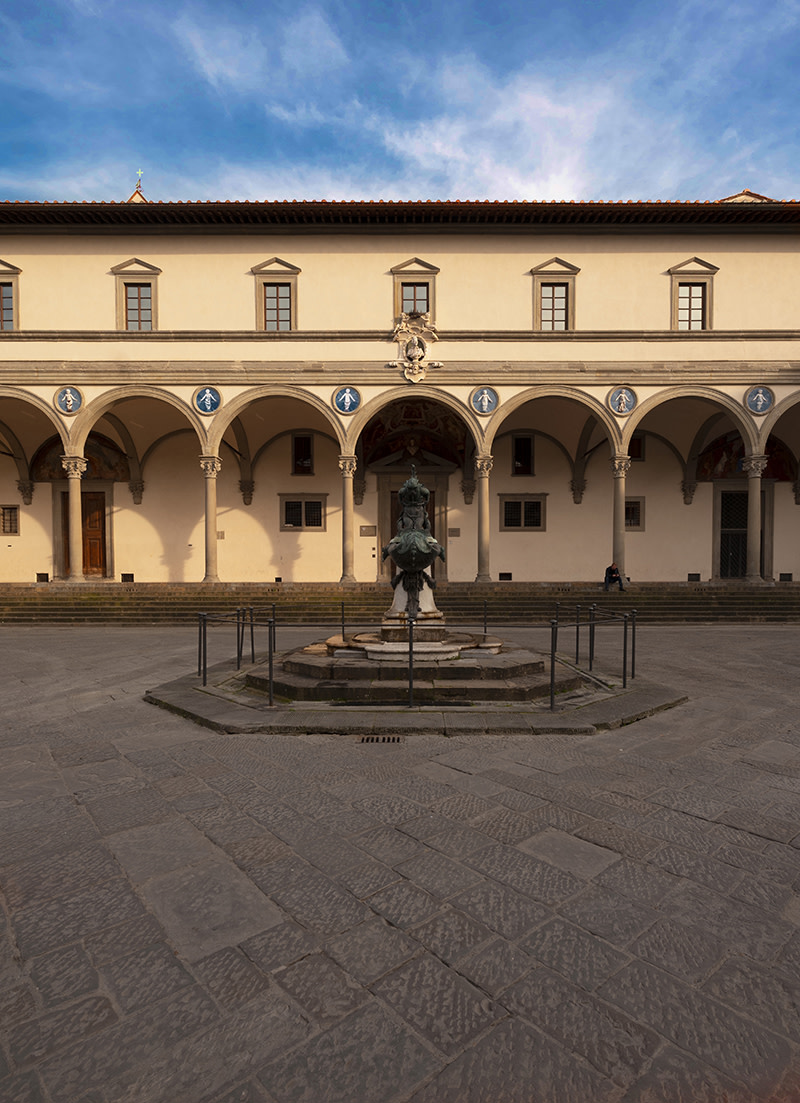 Piazza Santissima Annunziata ph Lorenzo Cotrozzi
Piazza Santissima Annunziata ph Lorenzo CotrozziFrom here head towards the Duomo, enjoy the view of the Baptistery, skirt the left side of the Duomo and keeping left, left take via dei Servi which ends in Piazza Santissima Annunziata. This is the most beautiful square in Florence in my opinion, not only for the Della Robbia putti that decorate the facade of the Ospedale degli Innocenti, but also because it is the only square in the city that has not been spoiled by bars and shops. Between the Ospedale and the church, is the Archaeological Museum, a concentrate of beauty. Here are two works that have totally captivated me - the Chimera, part dragon, part lion, a bronze work so perfect it is hard to believe it is Etruscan from the 5th century BC! Nearby, there is the head of the Medici Ricciardi Horse, also in bronze, Greek from the 4th century BC. Extraordinary. Now try and do as I do, when I ask Celestina, my sky blue Vespa, for help. For me, who as a good German always rode a bicycle, it was a novelty, but I love this very typically Italian means of transport. Jump on the seat and head towards the Stibbert Museum, where you will discover the incredible. In the 19th century, after coming into a substantial inheritance, Federico Stibbert collected all kinds of things - porcelain, fabrics, clothes, furniture, weapons and armour. His home, located north-west of the city, has become a museum. The most impressive thing is the Sala della Cavalcata, where a dozen knights on horseback in 16th century armour and trappings from Northern Germany and Spain are on parade.
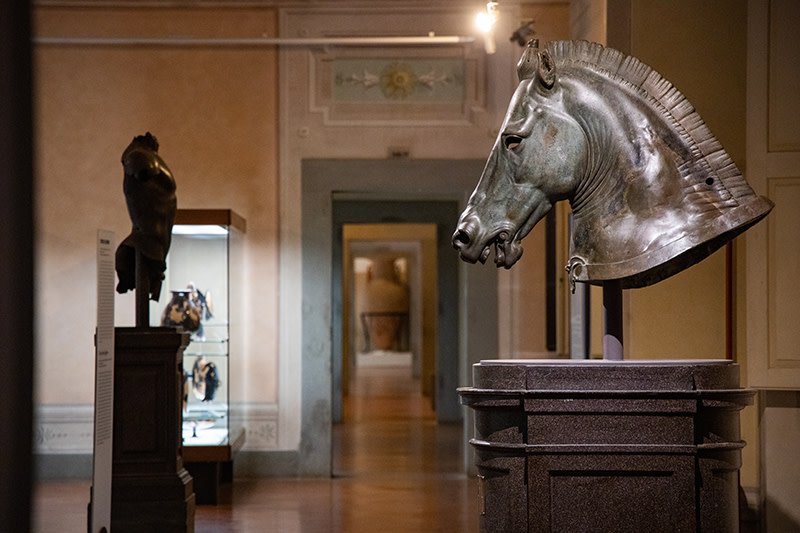 the Medici Ricciardi Horse at the Archaeological Museum, Greek bronze from the 4th century BC
the Medici Ricciardi Horse at the Archaeological Museum, Greek bronze from the 4th century BCFrom via Federico Stibbert, the penultimate destination to be reached on two wheels is the Church of San Martino a Mensola, on the border between Florence and Fiesole. It is a parish church entrusted to another exceptional priest, Father Paolo, and is full of works of art, altarpieces and a famous organ that is still played as it should be. At the end of the church, on the left, pay attention now, is the Crucifix which was just recently attributed to Benedetto da Maiano. The trip has been well worth it. And since you are here, I suggest you also make a quick trip to Settignano, climbing up beautiful winding roads surrounded by olive trees. Then return to the city, head for Viale Machiavelli and the Liceo Artistico di Porta Romana, even if everyone still calls it the Porta Romana Art Institute. Since it is a school, be mindful that you should call and ask permission to visit it.
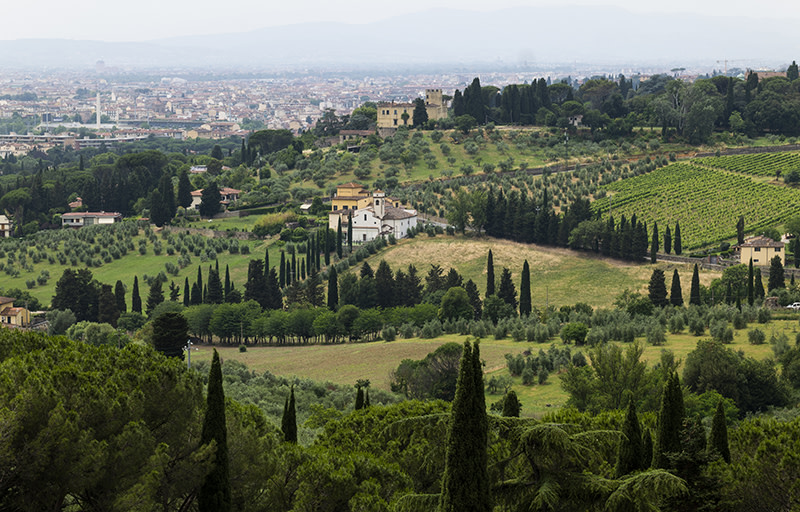 The Church of San Martino a Mensola seen from the Settignano hills (ph. Lorenzo Cotrozzi)
The Church of San Martino a Mensola seen from the Settignano hills (ph. Lorenzo Cotrozzi) But if you can, go straight to the Gipsoteca, or plaster cast gallery, where you will find plaster casts of Florence’s main masterpieces. And you know what? Here, there is Florence’s fourth David, a life-size plaster copy of Michelangelo’s masterpiece that I can now say I know like a member of my own family. For the record, I would like to point out that the original is the one I have at the Academy, the second is the bronze copy in the middle of Piazzale Michelangelo, the third is the marble copy in Piazza della Signoria, the third is and the fourth is here, before your eyes.
Now, look at the clock and if you are in time, get back on the road and in five minutes of curves you will be back at San Miniato for 5.30 pm Sunday mass in Latin and Gregorian chant. Sit back and enjoy the conclusion of this tour of Florence in blissful contemplation”.






